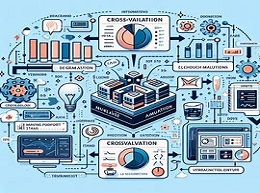Predicting Stock Prices with Time Series Analysis

Time Series Analysis
Stock markets have always been subject to volatility and uncertainty, making accurate predictions of stock prices a challenging endeavor. However, with the advent of time series analysis techniques, investors and analysts now have powerful tools at their disposal to forecast future stock prices based on historical data patterns. In this article, we'll delve into the world of time series analysis and explore how it can be used to predict stock prices effectively.
Understanding Time Series Data
Time series data refers to a sequence of observations recorded at regular intervals over time. In the context of stock prices, each observation represents the price of a particular stock at a specific point in time. Time series analysis involves analyzing these data points to identify patterns, trends, and relationships that can be used to make predictions about future stock prices.
Key Concepts in Time Series Analysis
-
Trend Analysis: Trend analysis involves identifying long-term patterns or trends in the data, such as upward or downward movements in stock prices over time. This can be done using techniques such as moving averages or linear regression.
-
Seasonality: Seasonality refers to recurring patterns or cycles in the data that occur at regular intervals, such as daily, weekly, or yearly fluctuations in stock prices. Seasonal decomposition techniques, such as seasonal adjustment or Fourier analysis, can help identify and remove seasonal effects from the data.
-
Stationarity: Stationarity is a crucial concept in time series analysis, indicating that the statistical properties of the data remain constant over time. Non-stationary data, characterized by trends or seasonality, may require transformation techniques, such as differencing or detrending, to achieve stationarity.
Predictive Modeling with Time Series Analysis
-
Autoregressive Integrated Moving Average (ARIMA): ARIMA is a popular time series forecasting model that combines autoregression (AR), differencing (I), and moving average (MA) components to capture trend, seasonality, and noise in the data. ARIMA models are widely used for predicting stock prices and other time series data.
-
Exponential Smoothing Methods: Exponential smoothing methods, such as the Holt-Winters method, are based on recursively updating weighted averages of past observations to forecast future values. These methods are suitable for capturing trend and seasonality in the data.
-
Machine Learning Algorithms: Machine learning algorithms, such as support vector machines (SVM), random forests, and neural networks, can also be used for time series forecasting. These models can capture complex patterns and relationships in the data but may require more computational resources and tuning.
Real-World Examples
-
Google Trends Data: Analysts use Google Trends data to predict stock prices by monitoring search trends for specific companies or industries. An increase in search volume for a particular stock or sector may indicate growing investor interest and potential price movements.
-
Economic Indicators: Economic indicators, such as GDP growth, unemployment rates, and consumer spending, can serve as leading indicators for stock market trends. Analysts use time series analysis techniques to incorporate these indicators into their forecasting models and assess their impact on stock prices.
-
Technical Indicators: Technical indicators, such as moving averages, relative strength index (RSI), and MACD (Moving Average Convergence Divergence), are commonly used by traders to identify potential buy or sell signals in stock price charts. Time series analysis helps traders interpret these indicators and make informed trading decisions.
Time series analysis provides valuable insights into the patterns and trends underlying stock price movements, enabling investors and analysts to make informed predictions about future market behavior. By understanding the key concepts and techniques of time series analysis, practitioners can develop robust forecasting models and gain a competitive edge in the dynamic world of stock markets. While predicting stock prices with certainty remains a challenging task, the use of time series analysis techniques offers a systematic approach to understanding market dynamics and making data-driven investment decisions.














